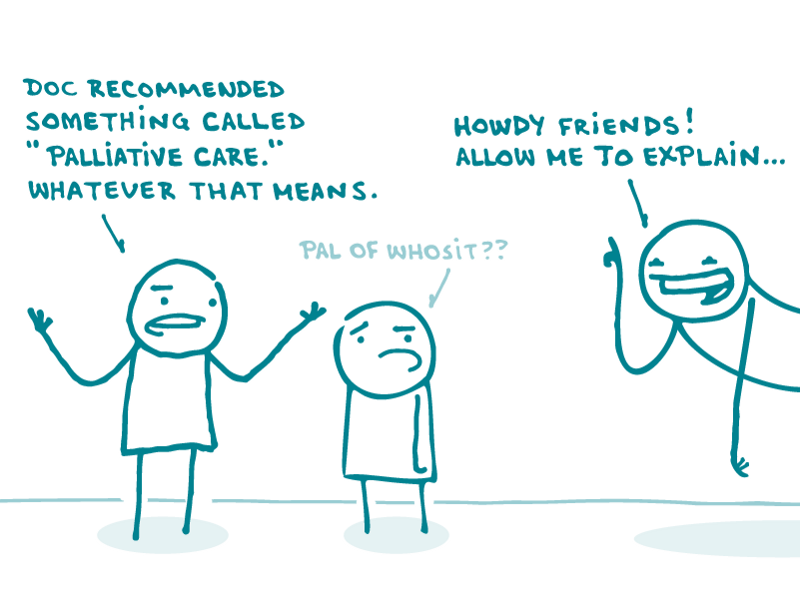
In general, people tend to associate health care with curing diseases. You get sick, the doctor makes you all better! Bada bing, bada boom.
But what happens when there’s no cure in sight? Or when there’s a cure, but it causes nasty side effects? Or when you want your doctor to focus on how you’re feeling and not just how fast your cancer is growing? That, dear readers, is where palliative care comes in.
Palliative care treats symptoms, rather than aiming to cure a disease. It eases pain, helps people function with chronic conditions, and puts patient preferences at the center of health care decisions. It recognizes that quality of life is just as important — or even more important — than keeping people alive at all costs.
Sounds nice, right? But palliative care often gets a bad rap — or no rap at all! Most people have never even heard of it. So as health communicators, we have an opportunity to debunk the misinformation and spread the word about this important type of health care.
Try these tips when writing about palliative care:
- Introduce the term — and define it in plain language. First things first: if you’re writing about palliative care, make sure your readers understand it from the get-go. Start with something like, “Palliative care focuses on helping people with very serious illnesses feel better — with the goal of improving their quality of life.” Then you can get into examples (like pain management) to drive it home.
- Skip the doom and gloom. While palliative care is often part of end-of-life or hospice care, it’s not the same thing. Focusing on easing symptoms does not equal throwing in the towel, and plenty of people get palliative care and go on to live long, healthy lives.
- Stress that it’s not either/or. Doctors often provide palliative care alongside aggressive treatments — like treating nausea caused by chemotherapy. So don’t set up a choice between curing the disease and finding relief from symptoms and side effects.
- Promote shared decision-making. A doctor following clinical practice guidelines in a vacuum may default to aggressive treatments in search of a cure. But palliative care requires real conversations between doctors and patients — so take this chance to sneak in some education around shared decision-making.
- Empower patients to choose. Palliative versus curative care isn’t always an either/or choice — but sometimes it is. And that’s okay. When faced with painful treatments that may only buy a bit more time, people have every right to say no to a potential cure. Choosing to focus on quality of life over quantity of life is a valid choice — so make sure to frame it accordingly.
Bottom line: Palliative care promotes quality of life — so help promote palliative care with quality health communication.
Browse recent posts